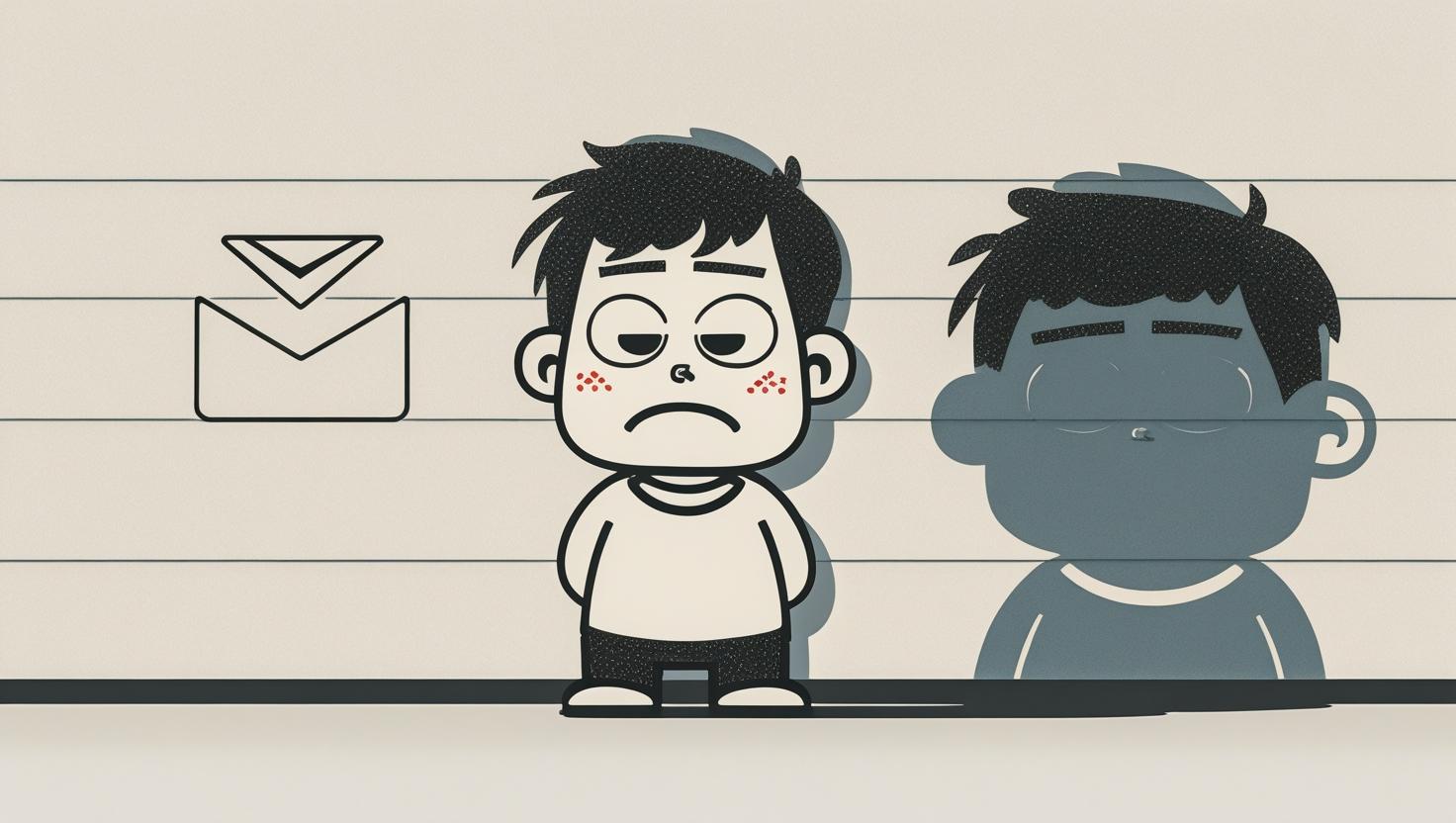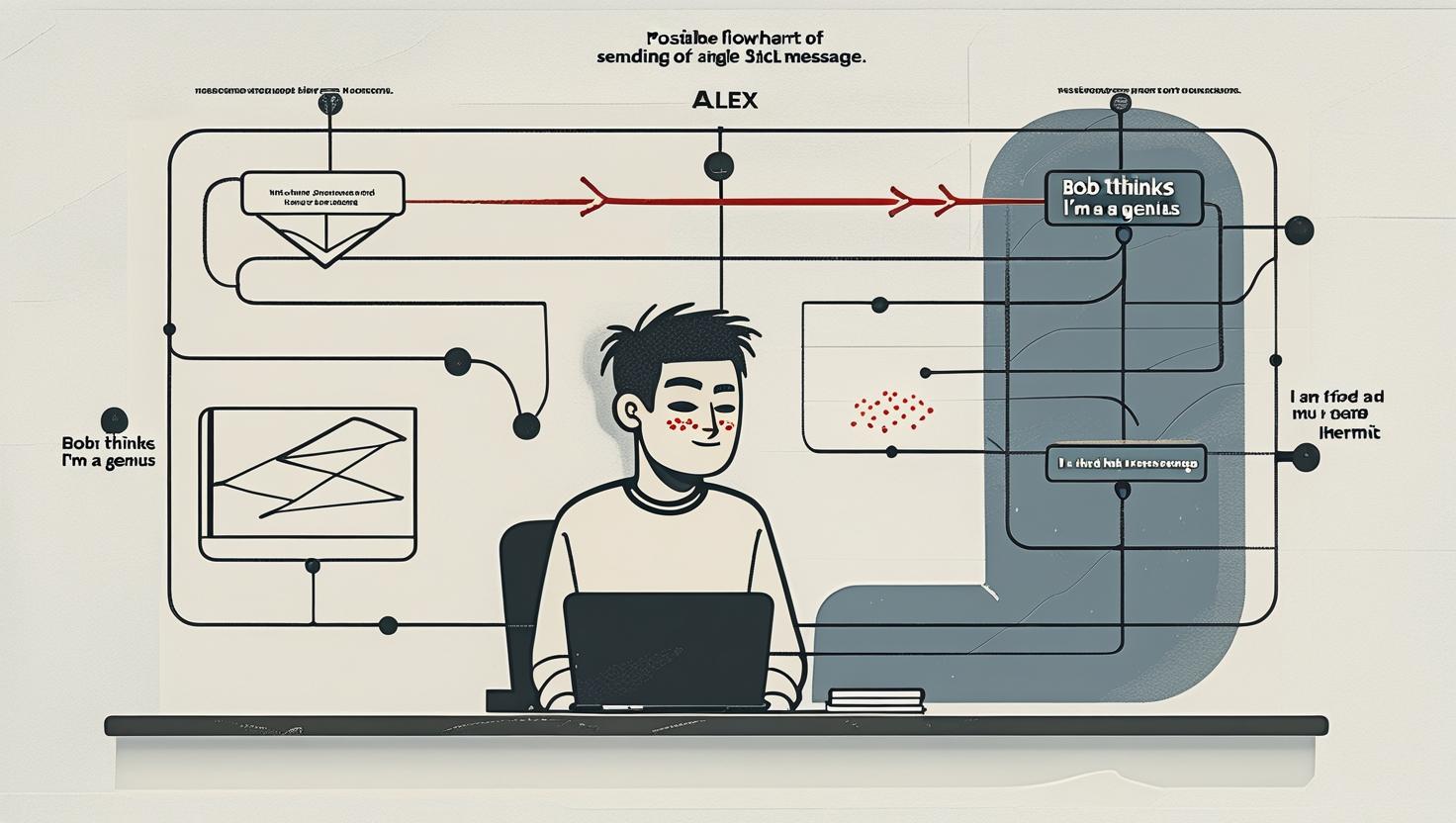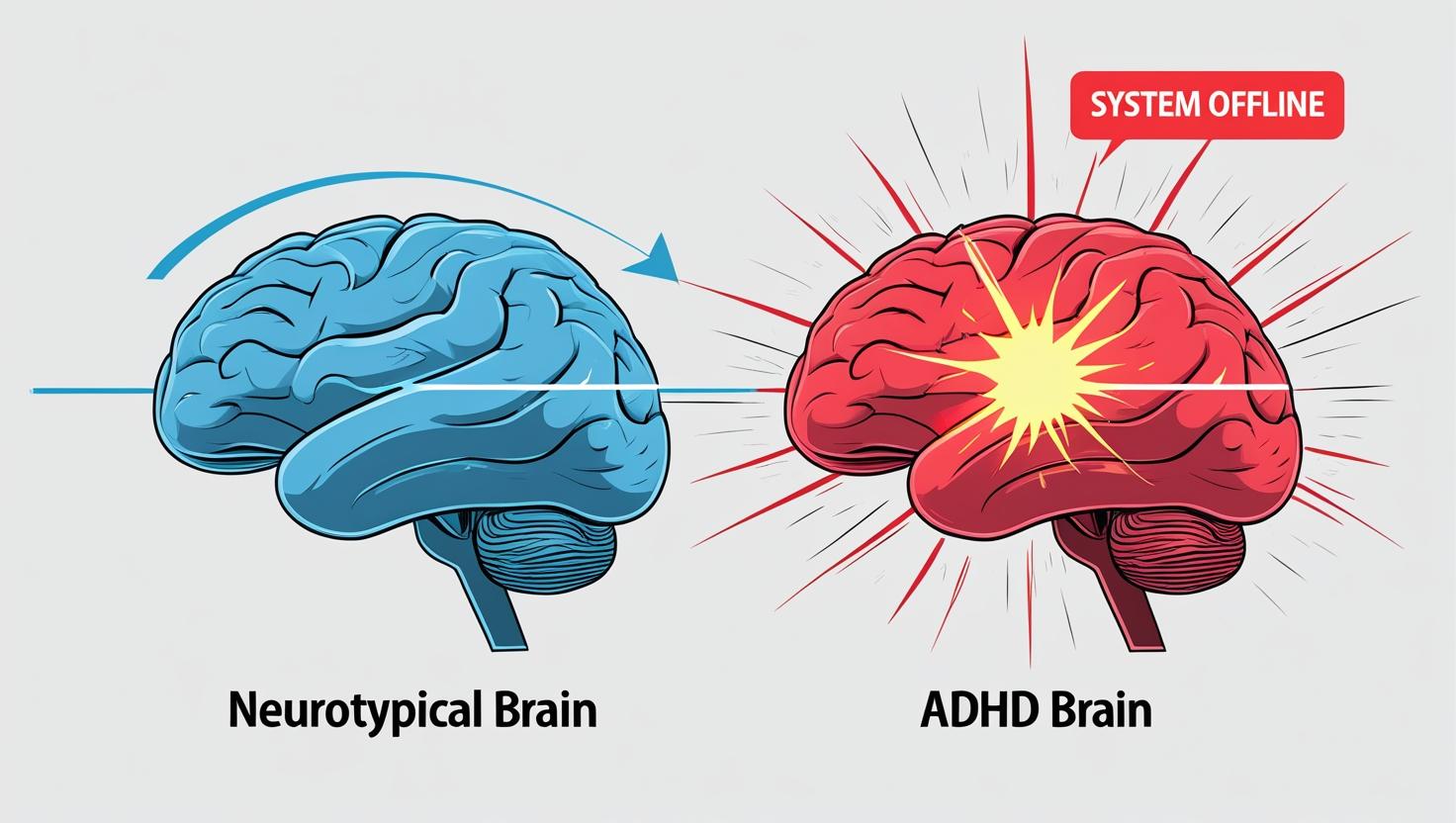Why That ‘Easy’ Task Feels Like a Boss Battle (And the 2-Minute Cheat Code for Your ADHD Brain)

📖 Take One: The Great Slack Paralysis of 10:02 AM
My day was going fine. Deceptively fine. I’d survived the morning stand-up by mumbling something that sounded like “synergy” and “blockers,” which is corporate for “I am physically present.” Then, at 10:02 AM, it happened. A Slack notification from my manager, Bob.
Ping.
Just one. A single, cheerful red dot. The message was simple: “Hey Alex, can you send me the link to that Q3-Planning doc when you have a sec?”
My brain’s immediate, tactical response was, naturally, to declare a state of emergency.
This wasn’t a request. This was a pop quiz on my entire existence as a competent human being. Sending the link is a 12-second task. But my brain, a master strategist, saw the hidden traps. What if I send the wrong link? What if my accompanying message, “Here you go!”, sounds passive-aggressive?
I decided the only logical course of action was to first optimize my digital workspace. For efficiency. I spent the next 45 minutes meticulously rearranging the icons on my desktop into a beautiful, cascading rainbow pattern. This is all part of the process. You can’t rush genius.
An hour later, my desktop was a work of art, and I had researched the history of the “thumbs-up” emoji to ensure it was culturally appropriate. The link remained unsent. I felt a familiar, hot wave of shame wash over me. Why are you like this? my inner narrator chimed in. I brushed it aside. Clearly, I just needed more coffee before tackling a high-stakes mission like this.

🔬 Science Alert: Your Brain Isn’t Broken, It’s on High Alert
If that story felt uncomfortably familiar, it’s because your brain is running the standard ADHD operating system. That “easy” task isn’t just a task. For you, it’s the Wall of Awful™—an invisible, emotional barrier built from the bricks of every past failure, criticism, and “why-can’t-you-just” moment you’ve ever had.
🧠 Short Circuit: Your Brain Thinks Slack Is a Saber-Toothed Tiger
The Science TL;DR: It’s not laziness. It’s a threat response. Your brain’s alarm system (the amygdala), often hypersensitized by experiences like Rejection Sensitive Dysphoria (RSD), has mistaken a simple chore for a genuine danger. It’s screaming “DANGER!” so loudly that your logic center (the prefrontal cortex) gets muted. You aren’t choosing not to act; your brain is literally trying to “protect” you by freezing. It thinks it’s defusing a bomb, not sending a Slack message.

🎮 The Quest: Dismantling the Wall, One Brick at a Time
You can’t smash through the Wall of Awful with willpower. You have to trick it. You have to go around it, one tiny, non-threatening step at a time. And remember, if you try a hack and it doesn’t work, the bricks rebuild. That’s okay. Tomorrow is another quest. 60% progress is infinitely better than 0%.
Step 1: The ‘Just Touch It’ Rule (+5 XP). You don’t have to do the task. Your only mission is to physically touch the object associated with it. Touch the coffee cup. Put your hand on the laundry basket. Open the Slack app. That’s it. Mission accomplished. You win.
Step 2: The Two-Minute Timer Mission (+10 XP). This isn’t a timer to finish the task. It’s a timer to start. Set it for two minutes. You are required to stop when it goes off. The goal is to prove to your brain that the task isn’t a forever-prison.
⚠️ Fair Warning: The Hyperfocus Backfire Be careful with Step 2. Sometimes, that two-minute timer can accidentally trigger a four-hour hyperfocus session where you reorganize your entire digital life. If that happens, don’t see it as a failure—see it as data. Your brain found something interesting! The trick is learning to aim that powerful focus at the right target.
- Step 3: The Dopamine Appetizer (+25 XP). Before you even think about the task, promise yourself a small, immediate reward for completing the Two-Minute Mission. Listen to one favorite song. Watch one funny cat video. The reward must be immediate.
🔄 Take Two: Boss Fight Rematch
Okay, take two. Bob’s Slack message is still there, mocking me. The shame spiral is starting. But this time, I try something different.
Mission: Just Touch It. I open the Slack app. My heart does a little panic-judo-kick, but I don’t have to reply. I just had to open it. (+5 XP).
Okay, that wasn’t… completely horrible.
Mission: Two-Minute Timer. I set a timer. Two minutes to find and copy the link. I find the doc. I copy the link. The timer goes off. (+10 XP).
This is where I almost failed. I wrote a reply: “Here’s the doc you asked for, hope it’s the right one, let me know if you need anything else, sorry for the delay!” I stared at it for three minutes, convinced it was the worst sentence ever written. A classic fail-forward moment. But then I remembered the quest. The goal wasn’t a perfect reply. It was just to reply. I deleted everything but “Here you go!” and smashed the send button before my brain could object. (+25 XP for the Dopamine Appetizer of ‘just shipping it’).
It wasn’t elegant. It wasn’t perfect. But it was done.
✨ XP TALLY: 40 XP EARNED! ✨ LEVEL UP: Emotional Task Initiation (Level 1)
For the first time all day, the Wall of Awful seemed a little smaller. Maybe it’s not a wall. Maybe it’s just a badly-coded paywall, and I’m finally finding the free trial.
🌟 GLIMPSE OF THRIVE
Imagine a week where replying to an email doesn’t feel like emotional open-heart surgery. It’s not about never feeling the resistance; it’s about knowing the cycle is exhausting and having a tool to make it suck slightly less. This is what’s possible when you stop fighting your brain and start giving it the right cheat codes.
Which quest will you try today?
- → A) The ‘Just Touch It’ Recon Mission
- → B) The Two-Minute Time Trial
- → C) The Dopamine Appetizer Heist
⚡ BONUS TIP
For the Overwhelmed: If you’ve scrolled all the way here and your brain is fried, just do this. Pick one thing in your room. Your coffee cup. A stray sock. Just pick it up and put it where it belongs. That’s it. You just proved the Wall of Awful is climbable.
Comprehensive FAQ: Decoding the “Easy Task” Paralysis
Category 1: Understanding the “Why”
Q: Why does a simple task like answering a Slack message or washing one dish feel so emotionally difficult?
A: This is the heart of the issue. Your brain isn’t processing a “simple task”; it’s reacting to the “Wall of Awful.” This is an invisible emotional barrier built from the memory of every past time a simple task led to criticism, failure, or overwhelming feelings. Your brain’s threat detector (the amygdala) misfires, treating the task like a genuine danger and triggering a “freeze” response, which shuts down the logical part of your brain needed to act.
Q: Is this just being lazy or dramatic? My paralysis feels real but looks irrational from the outside.
A: It is absolutely real. The feeling of being physically “frozen” or paralyzed is a genuine neurobiological state. When your amygdala sounds the alarm, it floods your system with stress hormones like cortisol and adrenaline. These chemicals directly inhibit the function of your prefrontal cortex—the part of your brain responsible for planning and action. You are not being lazy; your brain is in a physiological state of fight-or-flight (or, in this case, freeze), making rational action temporarily impossible.
Q: Why does a simple question from my boss or partner trigger this intense paralysis?
A: This is often amplified by Rejection Sensitive Dysphoria (RSD), a common trait in ADHD. For a brain with RSD, a simple request isn’t just a request—it’s a high-stakes performance with the potential for judgment or failure. This perceived social danger makes the emotional stakes of the “easy” task skyrocket, building the Wall of Awful even higher and making a freeze response much more likely.
Category 2: Practical Hacks & Strategies
Q: The “Just Touch It” rule seems too simple. Why would that actually work?
A: It works because it’s not about completing the task; it’s about breaking the “freeze” state. The state of paralysis is maintained by the brain’s perception of an overwhelming threat. The simple, non-threatening physical act of touching the associated object (the laptop, the dirty dish) sends a new, safe signal to your brain. It proves the “saber-toothed tiger” isn’t real, which can lower the amygdala’s alarm just enough to get your logical brain back online.
Q: How is the “Two-Minute Timer” different from a regular Pomodoro timer, which I always ignore?
A: It’s a completely different goal. A Pomodoro timer is designed for sustained focus (e.g., 25 minutes). The “Two-Minute Timer” is designed only for initiation. The most important rule is that you must stop when it goes off. This reframes the goal from the intimidating “finish this project” to the much safer “start this for 120 seconds.” It proves to your brain that the task has a defined, non-threatening end.
Q: How can I explain this freeze-up to someone without it sounding like a flimsy excuse?
A: Use a simple, non-personal analogy. A great one is the “Smoke Alarm.” You can say: “Sometimes my brain’s smoke alarm goes off for a piece of burnt toast. I know logically it’s not a real fire, but the alarm is incredibly loud, and I can’t think clearly until I’ve calmed it down. I’m not avoiding the task; I’m dealing with a faulty alarm system first.” This frames it as a mechanical glitch, not a character flaw.
Category 3: Mindset & Troubleshooting
Q: I tried the “Dopamine Appetizer” reward but then got stuck on YouTube for an hour. Now I feel like a bigger failure. What happened?
A: This is a classic “Fail Forward” moment, and it’s completely normal. The key is to reframe what “success” means here. Did you do the two-minute task before the YouTube detour? If so, that is a 100% improvement over doing zero minutes. The goal is messy progress, not perfect execution. Acknowledge the partial win (“I broke the freeze!”), forgive the distraction (“The YouTube vortex is strong”), and recognize you’re still ahead of where you were.
Q: How do I handle the intense shame and self-blame that comes with being paralyzed by something so “easy”?
A: Use a two-step process: Validate, then Externalize.
- Validate: Acknowledge the feeling without judgment. Say to yourself, “It’s okay to feel frustrated and ashamed. This is a genuinely difficult experience.”
- Externalize: Blame the mechanism, not your character. Say, “This isn’t me. This is my amygdala misfiring. It’s a brain glitch.” This shifts your focus from self-attack (“I’m broken”) to problem-solving (“How do I work around this glitch?”).
Q: Will I always have to fight this “Wall of Awful” for simple things?
A: The “Wall” may always be a part of your brain’s architecture, but it doesn’t have to be a monumental obstacle forever. With practice, you get much faster at recognizing it, the emotional charge lessens, and you become more skilled at using your “cheat codes” to dismantle it. The bricks get smaller, and you become an expert at finding a way around them. It becomes less of a battle and more of a familiar, manageable puzzle.
📢 CALL TO ACTION
- Screenshot your favorite hack from the Solution Quest and tag us @QuirkyLabs on Instagram. We’ll DM you a bonus meme for your bravery.
- Comment ‘First brick’ if you tried even one tiny step. No essays needed. We see you.